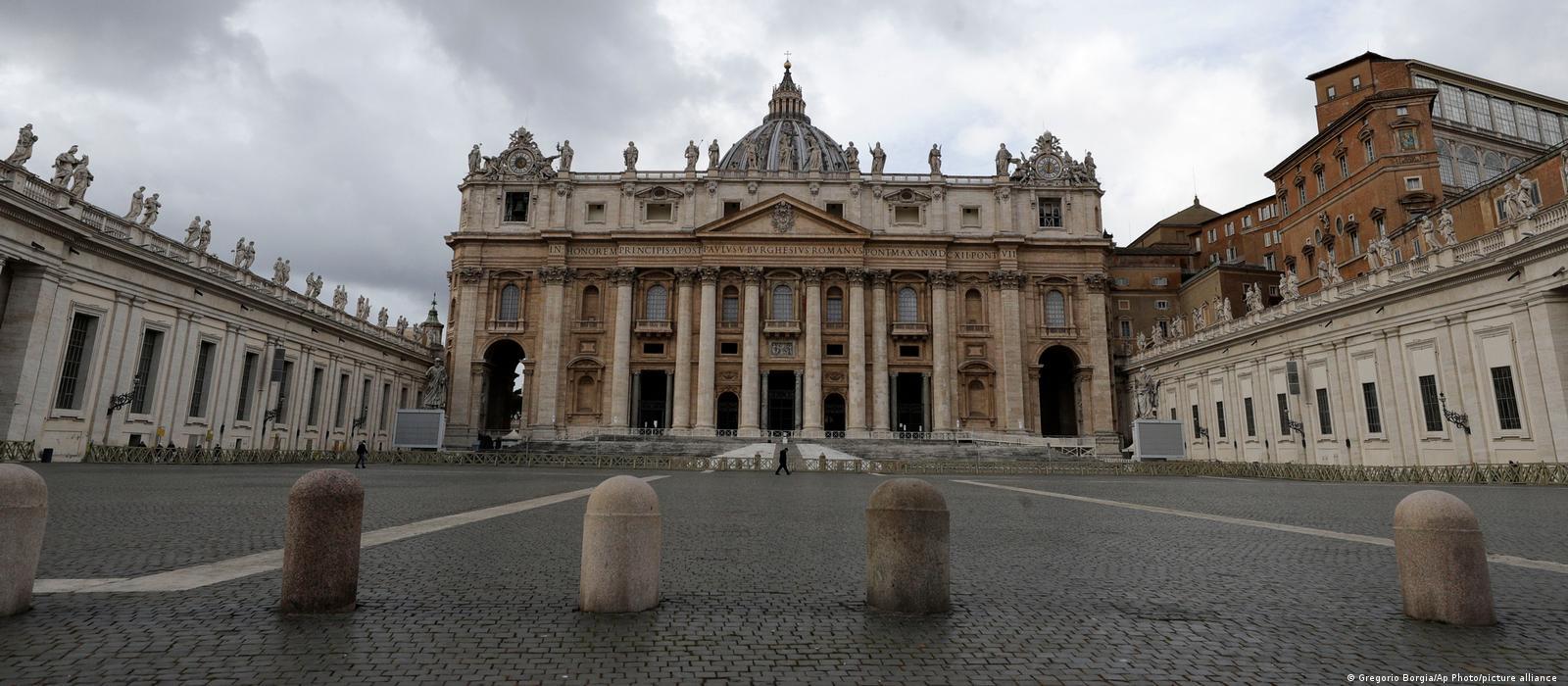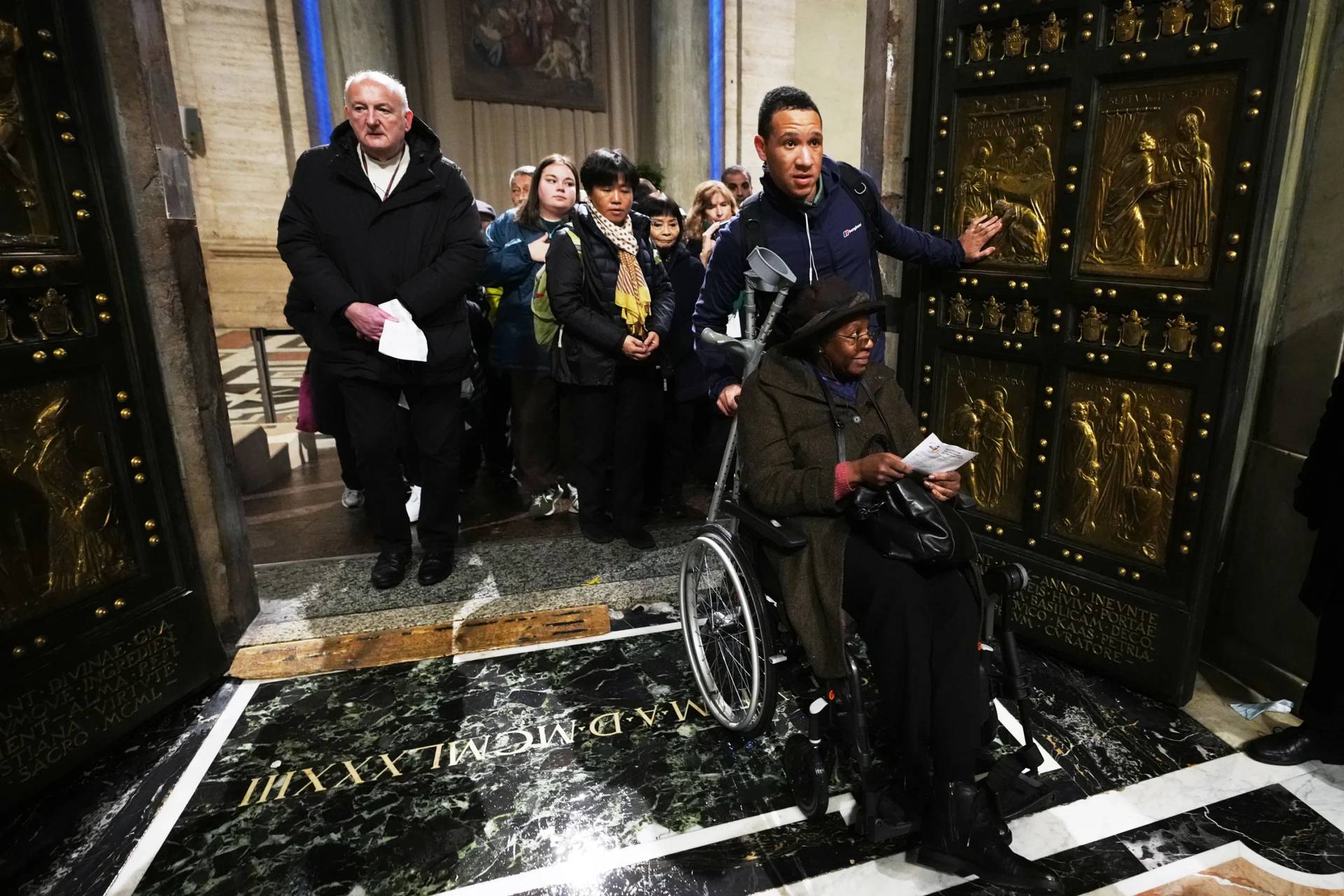ROME – With the 2025 Jubilee of Hope rapidly approaching, Italian and Vatican officials have met to discuss ongoing preparations, announcing that a slew of ambitious and costly city renovations are set to begin over the summer.
Vatican and Italian delegations met Wednesday to discuss preparations for 2025 jubilee, which has the theme “Pilgrims of Hope,” and has been touted as a year of “hope and trust” for a world suffering the impact of war, the ongoing fallout of the COVID-19 pandemic, and threats to the climate.
The Jubilee of Hope will begin in December 2024 with the pontiff opening the “holy door” in St. Peter’s Basilica, offering the world’s 1.3 billion Catholics the possibility of obtaining a plenary indulgence and a year of special graces. The Jubilee of Hope will end on the feast of the Epiphany in 2026.
Attending Wednesday’s meeting was Italian Prime Minister Giorgia Meloni, as well as a slew of other Italian state officials, including the Minister of Foreign Affairs; the Minister of the Interior; the Minister of the Economy; the Minister of Infrastructure and Transport; the Minister of Culture; the Minister of Health; and the Minister of Tourism, as well as the president of Italy’s Lazio region and the mayor of Rome, Roberto Gualtieri.
Representing the Vatican were the Holy See’s Secretary of State Italian Cardinal Pietro Parolin; Archbishop Rino Fisichella, pro-prefect of the Vatican Dicastery for Evangelization, who is tasked with organizing the jubilee; the deputy Secretary of State, Venezuelan Archbishop Edgar Pena Parra; and the Secretary for Relations with States, British Archbishop Paul Gallagher, among others.
A statement from the Vatican described the meeting as positive, saying both parties “expressed gratitude for the collaboration between Italy and the Holy See and looked forward to an event which could make a spiritual and cultural contribution to the city of Rome and to the country.”
They stressed the need for ongoing collaboration as preparations continue, “aimed at promoting an adequate welcome of those, pilgrims and faithful, who come to the city for the occasion of the jubilee year,” the statement said.
Speaking to members of the press after the meeting, Fisichella said it was “a very effective meeting, it went very well,” and that each participant had a contribution to make related to their respective areas.
Gualtieri, he said, referring to Rome’s mayor, provided an update on a series of ambitious construction and renovation projects announced earlier this year in the lead up to the jubilee.
“The first works will begin in July of this year,” he said, leaving Rome less than 18 months to complete the work before the jubilee formally begins.
In addition, Italy’s Minister of Culture, Gennaro Sangiuliano, announced his intention to hold three major cultural initiatives for the 2025 jubilee, the first being a retrospective exhibit of past jubilees in the Catholic Church.
Other initiatives Sangiuliano announced were the creation of a large thematic religious exhibit featuring prominent Italian Renaissance artists containing pieces loaned from various European museums, and a series of concerts featuring well-known orchestras throughout Rome, Milan and Naples.
Italian national broadcaster Rai on Wednesday also inaugurated a new television studio for their program Rai Vaticano alongside Fisichella and the administrative delegate of Rai, Carlo Fuortes.
The new studio is able to connect directly to the Vatican Press Office and will be dedicated to events related to the jubilee, the pope, and the Holy See.
Since January, Rai Vaticano has dedicated a portion of its programing to preparations for the jubilee, including a new program titled, “Jubilee 2025: Pilgrims of Hope,” reflecting the motto for the upcoming holy year.
The first-ever jubilee, called a “Holy Year,” was instituted by Pope Boniface VIII in 1300 and was initially celebrated every 100 years. Then, following biblical tradition, it took place every 50 years, and it was finally decided by Pope Paul II in 1490 that jubilees would be observed every 25 years, allowing each person to experience one in their lifetime.
Intended as a time of conversion and emphasis on God’s mercy and forgiveness of sins, jubilees begin with the opening of the Holy Door in St. Peter’s Basilica. Holy Doors at each of the four papal basilicas in Rome are destination points for pilgrims, who pass through seeking special graces.
The last Ordinary Jubilee was the Great Jubilee of 2000, celebrated by Pope John Paul II. The Holy Year of 2025 will be the 27th ordinary jubilee year of the Catholic Church.
A new custom of calling “extraordinary” jubilees, meaning they are announced and held outside of the 25-year rotation, and which can last a few days to a few months, began in the 16th century. There have only been a handful of extraordinary jubilees since, the latest being the 2015-2016 Extraordinary Jubilee of Mercy called by Pope Francis.
At the beginning of this year, Italian officials announced plans to spend roughly 1.8 billion Euro, or $1.95 billion, on nearly 100 different projects to update and enhance Rome ahead of the jubilee, which is expected to draw tens of millions of extra visitors to the city.
RELATED: Italy unveils ambitious spending plan of nearly $2 billion for 2025 Jubilee
An estimated 25 million pilgrims flooded the city of Rome during the Great Jubilee of 2000, which spanned from Christmas Eve 1999 to the feast of the Epiphany in 2001. Around 21 million came for Pope Francis’s extraordinary jubilee in 2015.
The 2025 jubilee will come exactly 10 years after the extraordinary Jubilee of Mercy and is also expected to draw millions of pilgrims.
Historically, jubilee years have also become occasions for the city of Rome to clean up its act, and have been preceded by significant city-wide works and renovations.
New projects to be completed ahead of the 2025 jubilee include basic road maintenance, the building of new parking garages; the addition of new bus routes to take pilgrims through historically and culturally relevant areas of Rome; and an underpass allowing pilgrims to cross from Castel Sant’Angelo to the main street leading up to the Vatican in safety, avoiding the heavily trafficked street that stands in between.
More city trains and buses will be added to the regular rotation; expansions and renovations will be made to several other transport hubs near the Vatican area; and security in the Vatican area will be increased.
In terms of spiritual preparation for the jubilee, Pope Francis has asked Catholics to study documents from the Second Vatican Council, held from 1962-65.
Presenting the official logo for the jubilee last year, Fisichella also conveyed the pope’s plan for spiritual preparation, saying the year 2023 would be dedicated to reflecting on the four constitutions of the Second Vatican Council, and the year 2024 would focus on prayer.
RELATED: Pope asks Catholics to study Vatican II before Holy Year 2025
The four constitutions to come out of Vatican II are the constitution on the Sacred Liturgy Sacrosanctum Concilium; the dogmatic constitution on the Church Lumen Gentium; the dogmatic constitution on Divine Revelation Dei Verbum; and the pastoral constitution on the Church in the modern world, Gaudium et Spes.
The Vatican has already created a website dedicated to the jubilee, where Catholics and pilgrims can find information on the event and related activities.
Follow Elise Ann Allen on Twitter: @eliseannallen













